2019 Winner
Book Award Years
Finalists
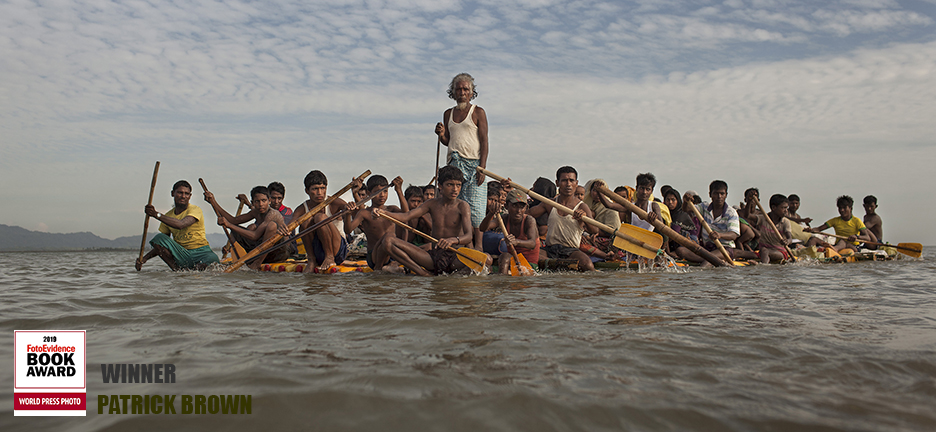
Patrick Brown ©2019 Panos/UNICEF
No Place on Earth
by
Patrick Brown
Winner of the 2019 FotoEvidence Book Award with World Press Photo
The Rohingya are a predominantly Muslim minority group in Rakhine State, western Myanmar. They number around one million people, laws passed in the 1980s effectively deprived them of Myanmar citizenship. Violence erupted in Myanmar on 25 August after a faction of Rohingya militants attacked police posts, killing 12 members of the Myanmar security forces. Myanmar authorities, in places supported by groups of Buddhists, launched a crackdown, attacking Rohingya villages and burning houses. In late August 2017, I starting hearing reports from friends and colleagues in Bangladesh that Rohingya Muslims were flooding across the border with horrific stories perpetrated by the Myanmar military and vigilantes.
The UN High Commissioner for Human Rights has called the crackdown in Rakhine State, Burma, “a textbook example of ethnic cleansing”. There is nothing clean about Ethnic cleansing – up close and on the ground, it’s murder, it’s rape, it’s people being slaughtered in the most systematic and barbaric way. It’s people. While euphemisms and diplomatic language can obscure the true horror inflicted by oppressive regimes, photography cuts through all the cold clinical terminology. Through photographs we’re forced to confront the cruel reality of what ethnic cleansing really looks like.
Although I’ve worked in tough environments before, nothing could have prepared me for the raw misery I saw and heard over the following months: orphan children carrying their younger siblings through flooded paddy fields; wounded men and women who had walked for 10 days with nothing more than their shirts on their backs. Soon the hundreds of desperate people became thousands, and then tens of thousands, then hundreds of thousands. Amid the crush of humanity and gathering monsoon rains, they tried to make shelters with anything that could give them some cover.
Today, the refugee camp in Cox’s Bazar is the world’s largest - a city of nearly a million people, more densely populated than Manhattan and the size of Copenhagen. Trapped on the edge of a foreign country and rejected by their ancestral homeland, the Rohingya have nothing there but their will to survive and whatever support we provide for them. Their needs are total: for clean drinking water, schools, health care, jobs. But most of all, a safe and dignified place to call home.
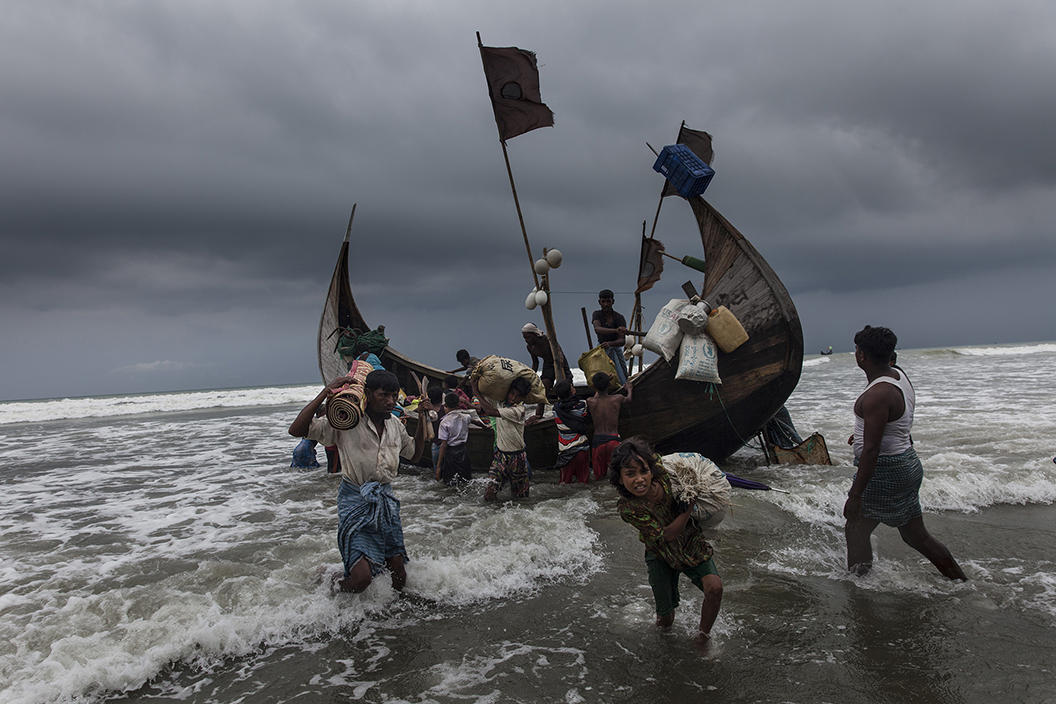
Noor Haba, 11, carries her family’s belongings to shore after they had sailed for five hours in the fishing boat to arrive early morning on Shamlapur Beach near Cox’s Bazar. Noor and her family had escaped the violence in Rakhine State with a group of 25 other Rohingya refugees.
7 September 2017. Patrick Brown ©2019 Panos/UNICEF
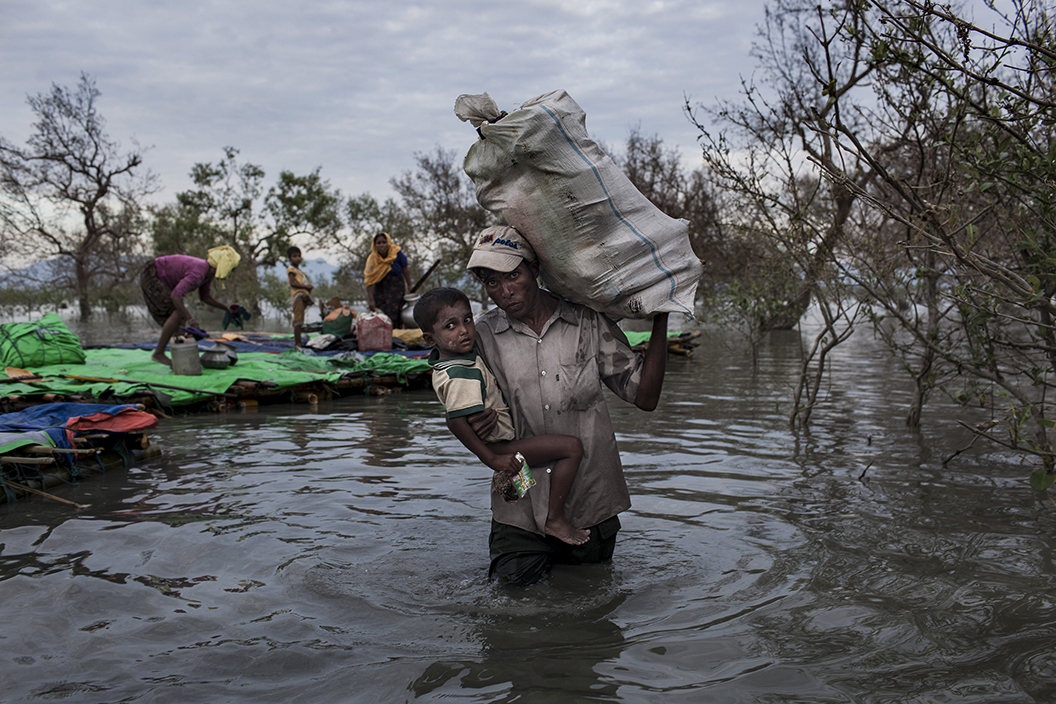
A man carries his treasured possessions to shore in Bangladesh after his group of Rohingya refugees landed their raft in a mangrove patch on the Naf River. 12 November 2017 Patrick Brown ©2019 Panos/UNICEF

Rohingya refugees from Myanmar walking through paddy fields and flooded land after they crossing over the border into Bangladesh. An unprecedented 430,000 Rohingya refugees, over 240,000 of them children, have fled Rakhine State in Myanmar into Cox's Bazar district of Bangladesh. Minors make up at least 60 per cent of the 430,000 Rohingya who have crossed the border to Bangladesh over the past few weeks. Highly traumatised, they are arriving malnourished and injured after walking for days to the safety of Bangladesh. Patrick Brown ©2019 Panos/UNICEF
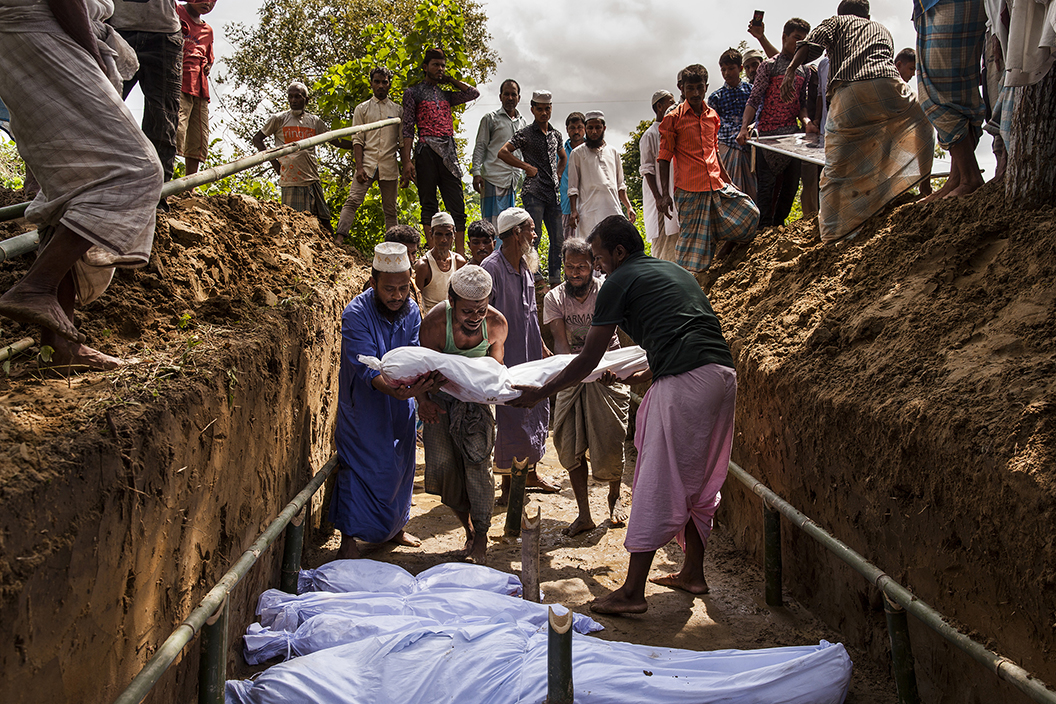
Bengali residents from the nearby Inani village donated the land and dug the mass grave for the 15 bodies recovered near their Inani Beach. Of the more than 100 Rohingyas from a boat that had capsized in the Bay of Bengal, only 17 people survived. 29 September 2017
Patrick Brown ©2019 Panos/UNICEF
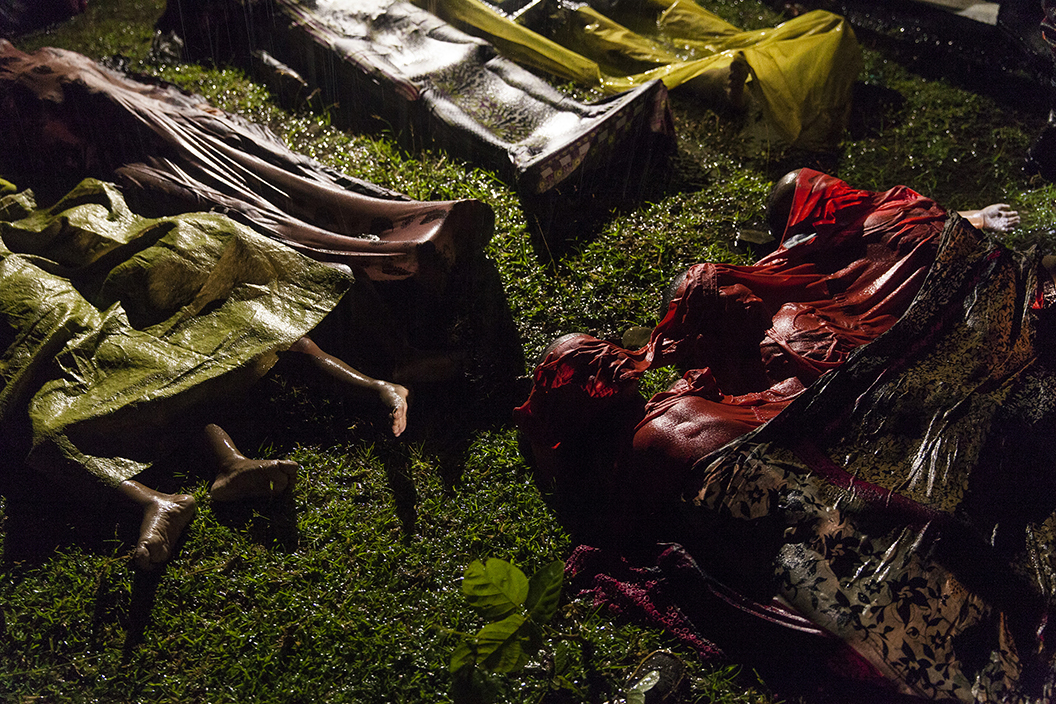
The bodies of 15 women and children lay waiting in heavy rain to be moved to a morgue. They were the only bodies found of more than 100 people on a boat that had capsized 8 km down the coast from Inani Beach, near Cox’s Bazar. Seventeen survivors were also found. 28 September 2017.
Patrick Brown ©2019 Panos/UNICEF
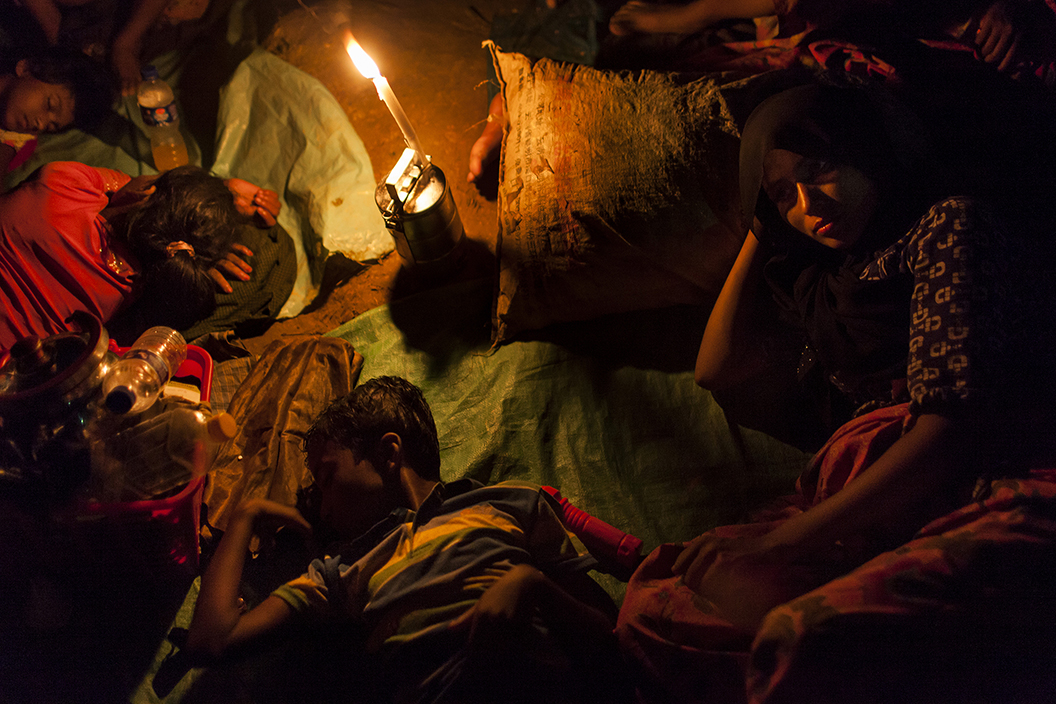
Momera, 25, watches over her sleeping brother, Mohammed Rias, 8, alongside Teknaf Highway while her husband, Saber, 27, searches for drinking water. Their only child had died the day before. The family had walked for nine days from their Ulafi village in Buthedaung District of Rakhine State to reach the Bangladesh border. The baby boy had been born midway of that journey. “This was my first child after five years of marriage,” she says. 30 September 2017 Patrick Brown ©2019 Panos/UNICEF
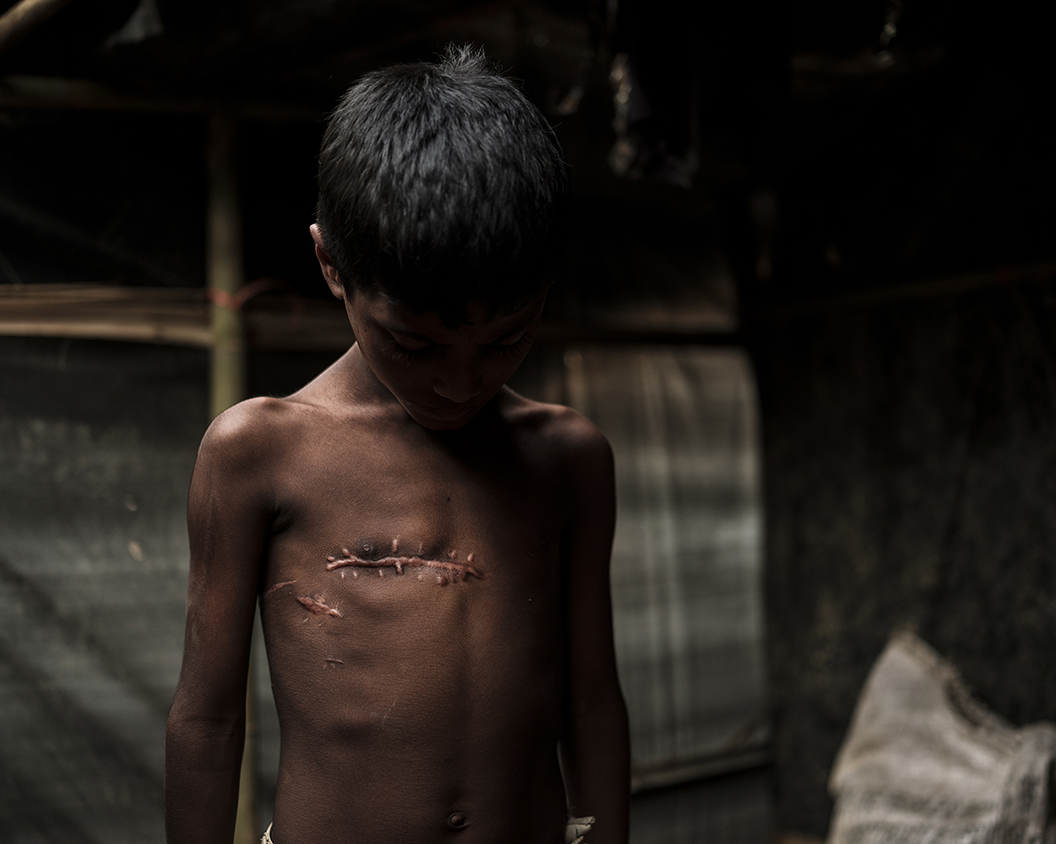
Mohammed Shohail, 7, was shot in the chest by a Myanmar soldier while running from the violence in his Julapar village, Maungdaw District. Doctors at General Hospital Cox’s Bazar removed the bullet, long after the boy and his family fled to Bangladesh. He says his chest hurts most of the time. 9 December 2017 Patrick Brown ©2019 Panos/UNICEF

Eight-year-old Mohammed Junaid was born with only partial hands and feet and finds it difficult making the ten-minute walk on the uneven terrain of Balukhali refugee camp to and from the children’s play centre. His friends pick him up when he falls. But he worries how he will survive for years in such a camp. His mother died of a sudden illness back in Myanmar and his father was shot dead when the family joined the mass exodus of Rohingya refugees to Bangladesh. Mohammed lives with his aunt, two sisters, four brothers and three cousins in the camp.
28 November 2017 Patrick Brown ©2019 Panos/UNICEF
